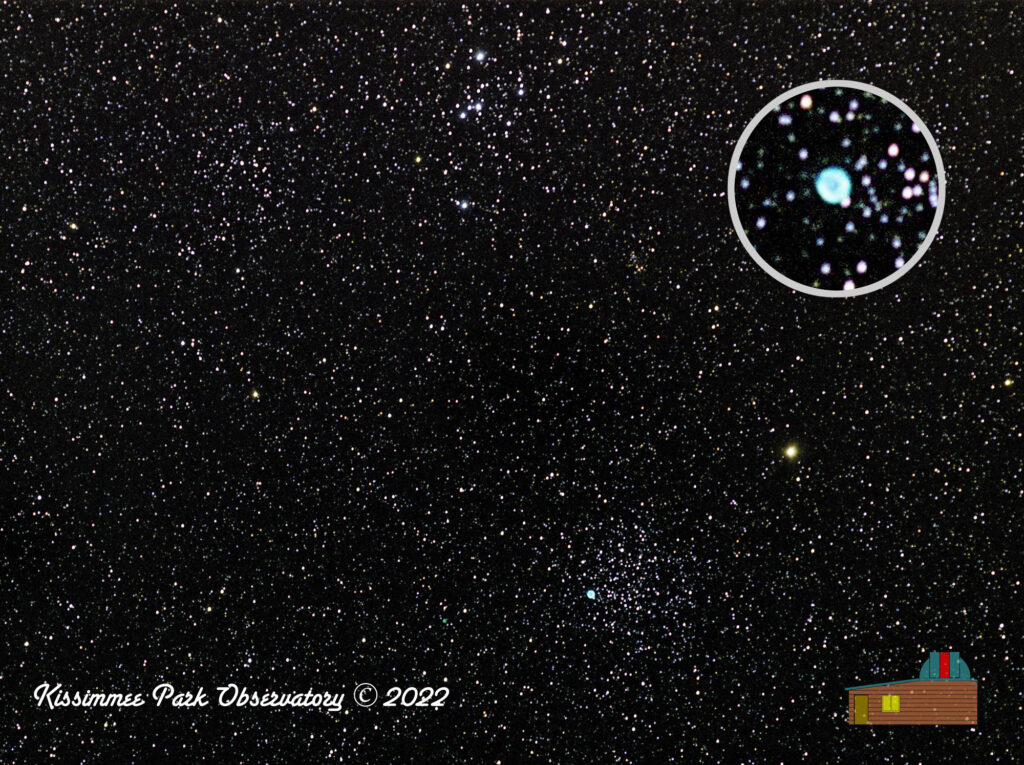The Winter Milky Way is home to hundreds of open star clusters. The constellation of Puppis lies just to the southeast of Canis Major and its brilliant alpha star Sirius, and the Milky Way passes right through the area. The clusters in this image are M47 at top, the richer but fainter cluster M46, with its embedded planetary nebula NGC 2438 at bottom (closeup presented in the inset), and the small open cluster NGC 2423 to the upper left of M47.
The planetary nebula NGC 2438 lies slightly farther away than M46, at 5500 light years, where the cluster itself is located 4900 light years away. In capturing this image series, the planetary was brightest in Oxygen III wavelengths and also bright in Hydrogen Alpha wavelengths. It was not nearly as bright in Sodium lines.
Interestingly enough, this image captured yet another planetary, 14th magnitude Minkowski 1-18; it is the light green “star” to the left of NGC 2438 at a distance of a little less than half a degree.
This 3 hour integration was taken with a first quarter moon in the sky, lying approximately 30 degrees away. The narrowband filters I use allow for deep sky imaging with the moon in the sky.
Click on the image for a larger version.
Image Info
- Imaged from the KPO field in Saint Cloud, Florida.
- Camera : ZWO ASI1600MM Pro
- Lens: Canon 100-400 f/5.6L lens, set to 386mm
- Mount: iOptron SmartEQ Pro
- Hydrogen Alpha: 12 subframes of 300s = 60 min integration, assigned to Green
- Oxygen III: 12 subframes of 300s = 60 min integration, assigned to Blue
- Sulphur II: 12 subframes of 300s = 60 min integration, assigned to Red
- Total integration time: 180 min = 3 hours.
- Captured via ASIAir Pro automation
- Optical tracking via ASIAir automation, currently using ST4 mount control via the ASI120MM-S guide camera
- Separate channels stacked and SHO 2 integrated in Astro Pixel Processor
- Image cropped, stretched, and noise processed in Nebulosity
- Final processing in Aperture
- Detail Inset created in PhotoShop

